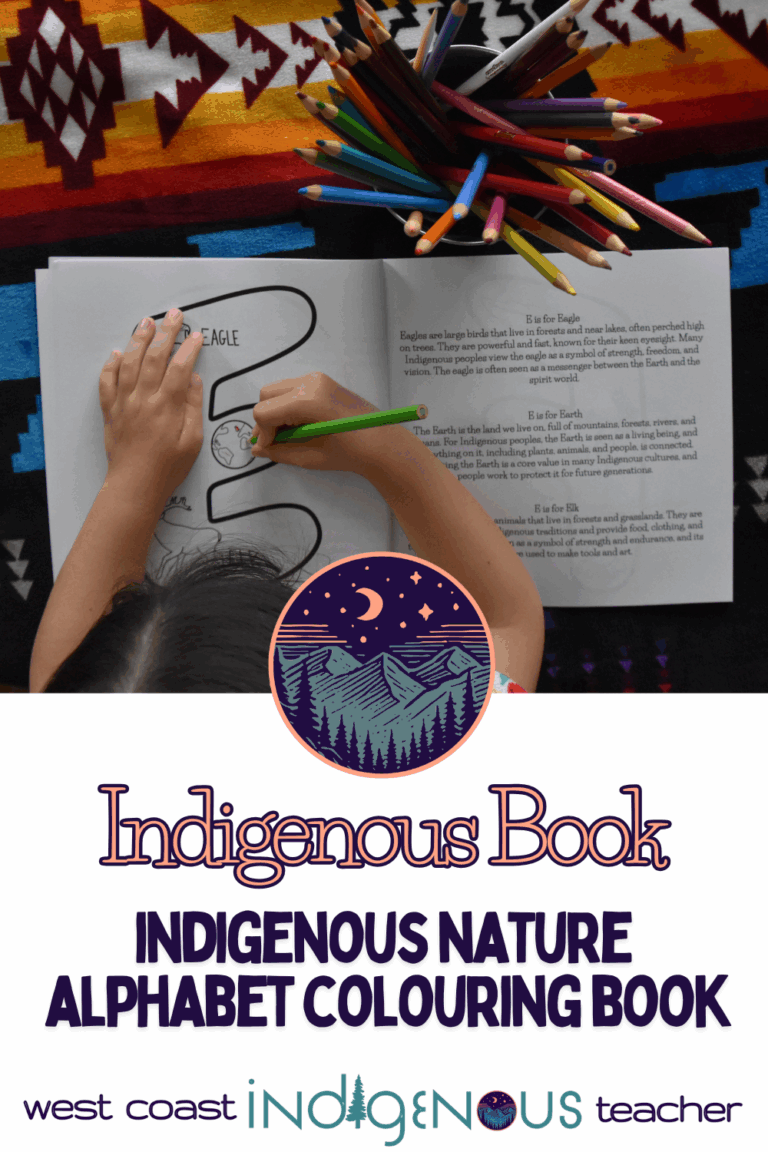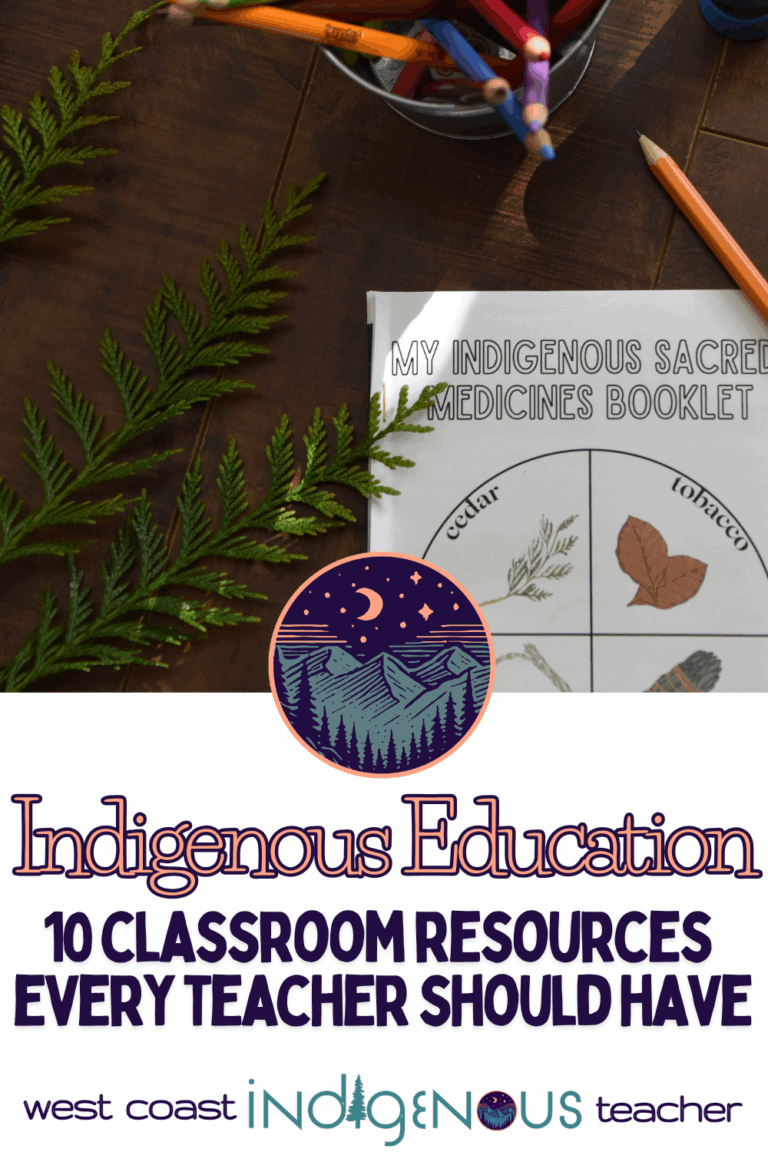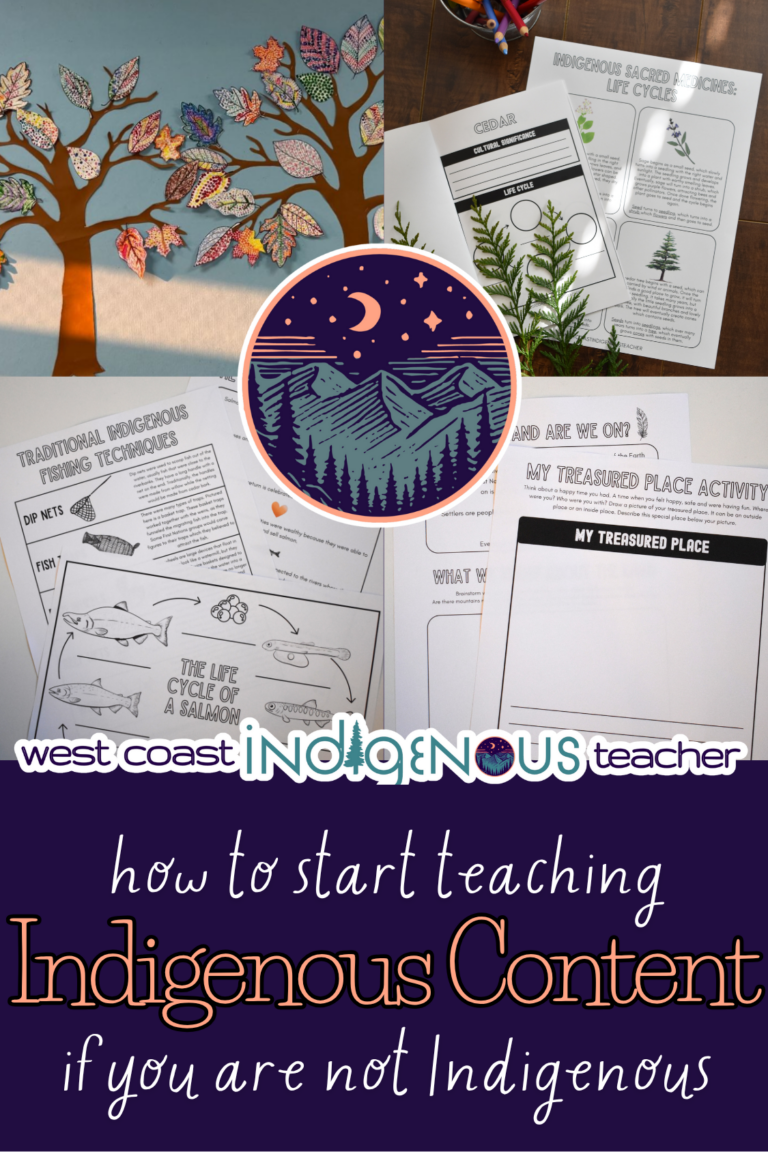If you’ve ever felt unsure about how to begin teaching truth and reconciliation in your classroom, you’re not alone. Many educators — especially non-Indigenous teachers — want to do better, but they don’t know where to start. They worry about “getting it wrong,” saying the wrong thing, or accidentally causing harm.
But avoiding the topic doesn’t help anyone — especially not your students.
Truth and reconciliation is not just a national issue. It’s a classroom issue. And the earlier we start having honest, respectful conversations, the more we support the next generation in building a better future.
So where do we start?
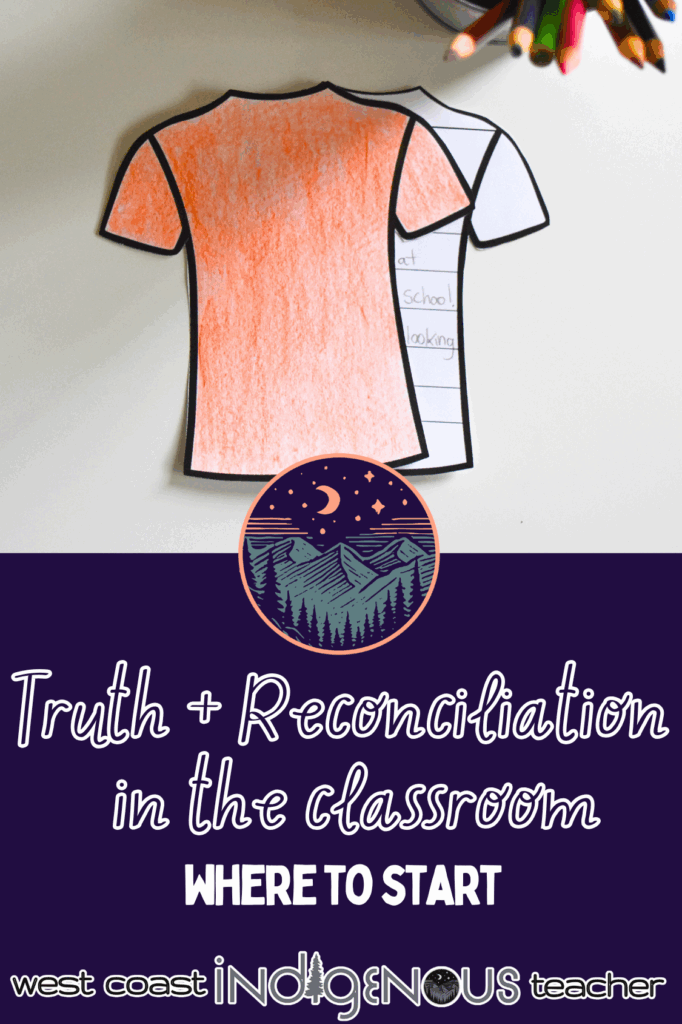
Step 1: Understand What Truth and Reconciliation Means
Truth and reconciliation is more than a phrase. It’s a process — one that begins with truth: understanding the real history of Canada, including the painful legacy of residential schools and the experiences of survivors.
Reconciliation is about action. It means creating space for Indigenous voices, perspectives, and teachings — in schools, in conversations, and in the resources we choose to use.
As educators, we are directly named in several of the Truth and Reconciliation Commission’s Calls to Action. We have a role to play in moving this work forward — starting with what and how we teach.
Step 2: Begin with Orange Shirt Day
One of the most meaningful and accessible entry points for teachers is Orange Shirt Day, recognized every year on September 30. This day honours the experience of residential school survivors and raises awareness about the history of these institutions in Canada.
Many educators ask me what’s appropriate to say or share on this day — especially with younger students. The key is to use gentle, age-appropriate language, focus on feelings and fairness, and always teach from a place of empathy and truth.
To support educators at every grade level, I’ve created three Orange Shirt Day bundles — each designed for a specific age group, with everything you need to teach this topic thoughtfully and meaningfully.
🍎 Orange Shirt Day Bundle for Primary Grades
This bundle introduces primary students to the importance of Orange Shirt Day and truth and reconciliation through gentle, reflective activities. It includes:
- An introduction to Indigenous Peoples in Canada
- A mini-lesson on Orange Shirt Day and residential schools
- Reading and drawing response to Phyllis’s Orange Shirt
- Empathy-based writing and bulletin board activity
- A land acknowledgement guide for young learners
- Printable colouring pages and writing prompts
👉 View the Primary Bundle
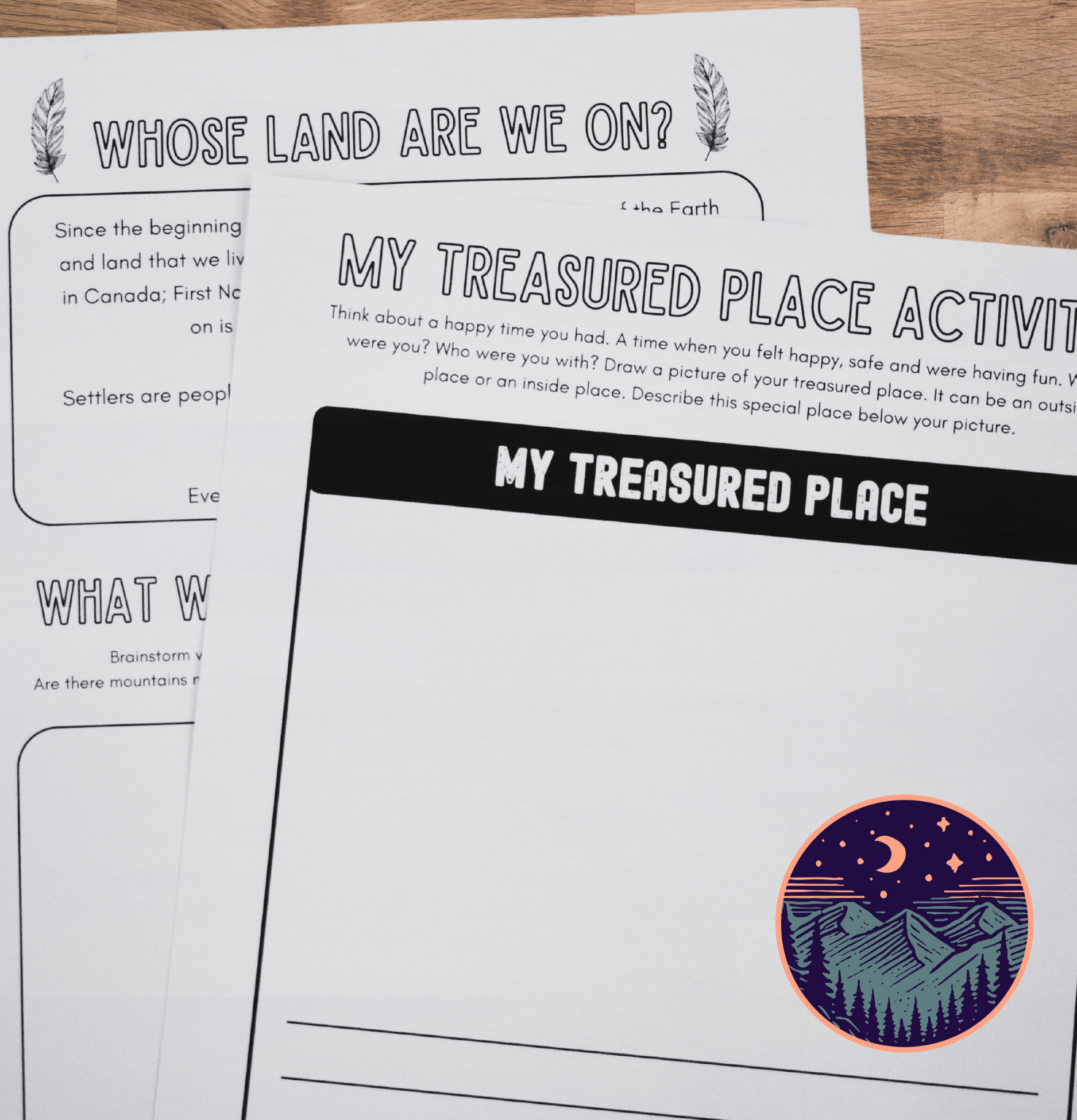
📘 Orange Shirt Day Bundle for Intermediate Grades
This resource bundle helps students explore the impact of residential schools with age-appropriate depth and opportunities for reflection. It includes:
- Activities introducing Indigenous Peoples in Canada
- A residential schools handout with questions and answer key
- Reading response to When We Were Alone
- A letter-writing activity to residential school survivors
- A land acknowledgement writing guide
👉 View the Intermediate Bundle
🎓 Orange Shirt Day Bundle for High School
Designed for older students, this bundle encourages deeper thinking, research, and real-world connection. It includes:
- Letter writing to residential school survivors
- A residential school research project with reflection and class display
- A full land acknowledgement package
- A 94 Calls to Action research project with current updates and guiding questions
👉 View the High School Bundle
Whether you teach Grade 1 or Grade 12, these bundles provide a supported and structured way to begin.
Step 3: Make It Ongoing — Not Just One Day a Year
While Orange Shirt Day is a powerful starting point, reconciliation shouldn’t only be discussed once a year. It should be woven into your classroom community and curriculum throughout the seasons.
You might:
- Include Indigenous perspectives in your social studies or science units
- Read Indigenous stories during your literacy block
- Start each week with a land acknowledgement
- Celebrate Indigenous heroes, artists, and scientists year-round
- Use art or nature activities to explore Indigenous worldviews
- Exploring teachings tied to the seasons, environment, and community
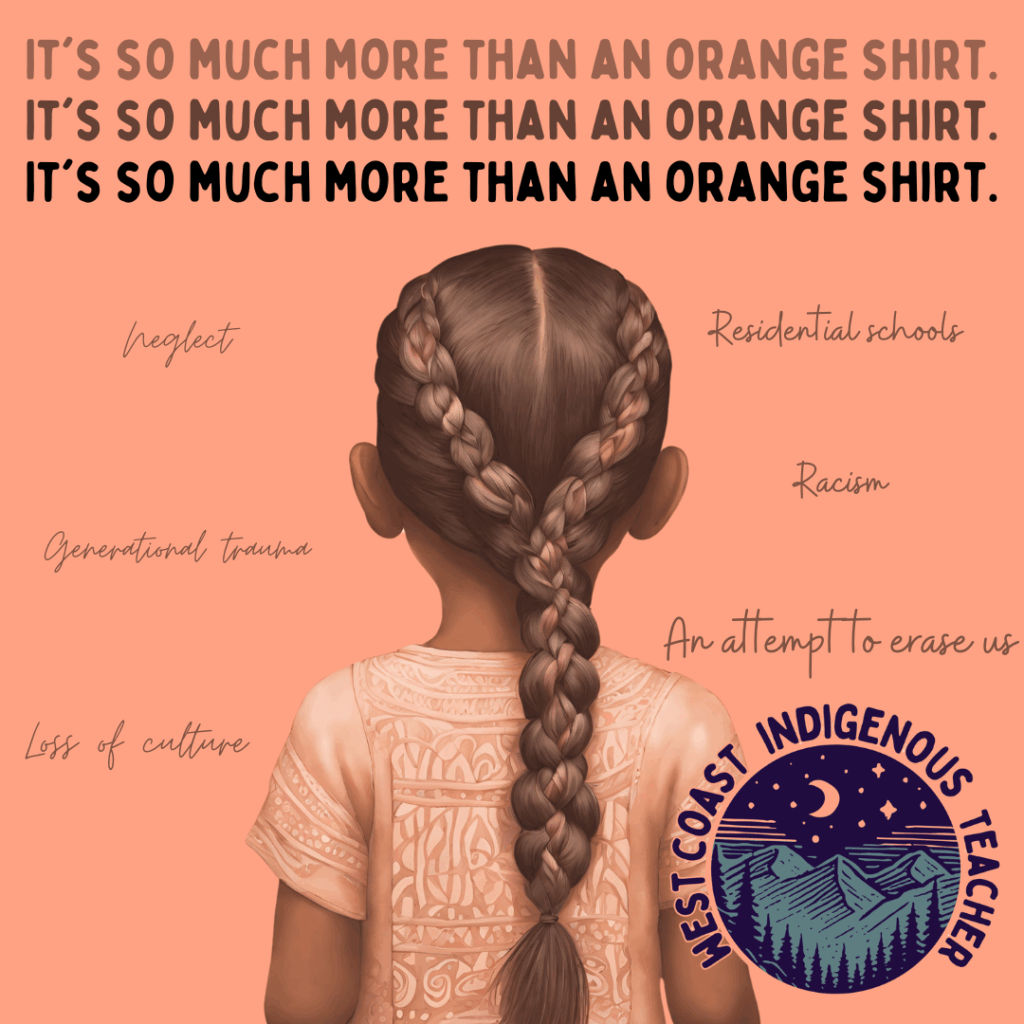
Step 4: Do Your Own Learning Too
We can’t teach what we don’t understand. Part of reconciliation is doing our own learning as educators. Read Indigenous books. Take free courses like Indigenous Canada from the University of Alberta. Explore the 94 Calls to Action. Follow Indigenous educators on social media. Ask questions, reflect, and be open to unlearning what you thought you knew.
You don’t need to be perfect — just open, honest, and willing to keep learning.
Step 5: Create a Culture of Empathy and Reflection
Teaching about truth and reconciliation isn’t just about information — it’s about emotions, empathy, and relationships. Give students the chance to reflect, ask questions, write, draw, and connect.
Let them process what they’re learning. Let them care. And always come back to hope — because reconciliation is ultimately about building a better future, together.
You’re Not Alone in This Work
Teaching truth and reconciliation isn’t always easy, but it’s deeply important. When we bring these conversations into our classrooms, we honour survivors, we uplift Indigenous voices, and we help students grow with empathy and awareness.
My Orange Shirt Day bundles are created to support that work — with age-appropriate language, real stories, and space for reflection.
I hope they offer a starting point for meaningful, respectful learning.
👉 Explore all Orange Shirt Day / Truth & Reconciliation activities!
🧡 Thank you for showing up for your students — and for reconciliation.

